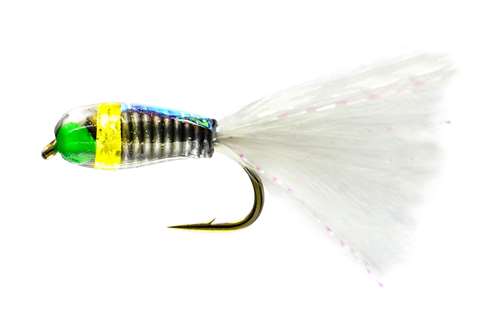Trout Nymphs - Subsurface Fly Patterns
Nymph and shrimp flies imitate the sub-surface food of trout & grayling. They are the larval form of flies so you can get Olive nymph or agile darters imitated by Pheasant Tail Nymphs, Mayflies and Damsels also have their own nymphs imitated by fly fishermen, These patterns are regularly used on stillwaters or many other species of fly that emerge while we are fishing using fishing flies. Some nymphs may take one or 2 years to develop into adults
Nymph Patterns
Top river trout nymph patterns include Caddis, Polish Woven, Czech and Pheasant Tail Nymphs, Montana & Stoneflies plus the traditional & successful GRHE Hare's Ear & Flashback.
When Do You Use Nymphs?
There is a vast range of fishing flies that imitate pupae and nymphs, as usual the question if which is the best nymph pattern to use? Of course it will come down to the venue, if you are on a river then try kick sampling and looking at what larvae are in the river.
Emergence
Caddis nymphs will be found on both stillwater and freshwater and are usually found emerging later in the evening when trout can gorge on these large bugs. Damsel Nymphs are excellent patterns for use on stillwaters, especially fished along the margins where Rainbow and Brown Trout hunt looking for the damsel crawling to the bank where they can emerge, Corixa Flies, also known as water boatmen are easily spotted at the margins of lakes and stillwaters where they move about with their big "paddles" with a layer of air trapped around them.
Nymphing Tactics
As 80% of the diet for Rainbow Trout and for Brown Trout is subsurface it is important that we learn to use nymphs for fly fishing. We can use nymphs in teams of 2 to 4 flies and one of the popular methods is the induce take. This is when the flies are presented below the surface and allowed to sink close to the river bed on a dead drift and then gently raised in the water to imitate the behaviour of the natural nymph. The behaviour of the fly when fished this way stimulates trout to regard the fly pattern as natural food, and to try to eat it, at which point we can set the hook. This technique has become known as the "Induced Take", which was developed by Frank Sawyer and the development of this technique may be considered to be as important as the development of the Pheasant Tail Nymph he developed.









































